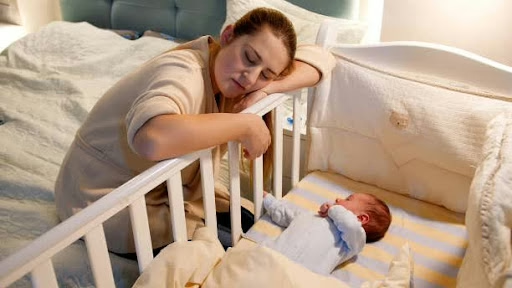When it comes to newborn sleep, it’s easy to feel overwhelmed by all the advice and products out there. Should you invest in blackout blinds? Does your baby really need a white noise machine? And what about room temperature — how cold is too cold?
Renowned sleep specialist Gemma Coe, author of Newborn Sleep Foundations, is cutting through the noise and focusing on what matters: creating the right newborn sleep environment that will help your baby settle more easily, sleep longer, and feel safe. Because, believe it or not, some small adjustments can make a big difference to how well your baby sleeps.
“Newborns can be highly sensitive to changes in their surroundings. Too much light, noise, or the wrong temperature can easily disrupt their sleep. Think about your sleep, you’ll also wake if the light comes on, the duvet falls off etc…
The good news? Unlike sleep schedules or complex routines, creating the right newborn sleep environment is something easy you can control. Once it’s set up, it becomes a simple yet effective way to support your baby’s sleep”.
Gemma shares her tips for creating the perfect sleep environment for your baby:
-
Keep It Dark
Darkness is a powerful sleep cue for babies (and adults too!). It signals to the brain that it’s time to wind down and triggers the release of melatonin, the hormone that helps us sleep. Babies typically start to produce Melatonin around 8 weeks of age.
What can you do? Invest in some good blackout blinds or curtains to keep the newborn sleep environment as dark as possible. Even if your baby isn’t particularly sensitive to light right now, as they grow, they’ll become more aware of their surroundings, and keeping the room dark will help them sleep better and longer.
For daytime naps, this is especially helpful as it mimics nighttime conditions and reduces distractions, making it easier for your baby to fall asleep.
-
White noise
Your newborn spent months in the womb surrounded by constant noise. The sound of your heartbeat, blood flow, and other internal noises were their soundtrack, so it makes sense that total silence can feel a bit unsettling. White noise can mimic these comforting sounds and create a consistent background noise in the newborn sleep environment, helping to drown out disruptive sounds like traffic, siblings, or household clatter.
Tip: A white noise machine can be a game-changer in the newborn sleep environment. Choose one that plays continuously throughout the night or during naps, rather than switching off after a certain period. Consistency is key here. Keep the volume at a safe level (the American Academy of Pediatrics recommends no louder than 50dB and placing the machine on the other side of the room).
-
Room temperature
One of the most crucial aspects of a good newborn sleep environment is maintaining the right room temperature. Babies aren’t as efficient at regulating their body temperature as adults, so it’s important to ensure the room is comfortably cool — ideally between 16°C and 20°C (60.8°F to 68°F). A room that’s too hot increases the risk of Sudden Infant Death Syndrome (SIDS), while a room that’s too cold can make your baby wake up due to discomfort.
A good rule of thumb is to dress your baby in layers you can easily add or remove, and always check their neck or chest to ensure they’re not too hot or cold. A sleeping bag with a clear TOG rating can help keep your baby snug without overheating, adding to the overall comfort of the newborn sleep environment.
Especially for your newborn, you may want to invest in a room thermometer to help you monitor the temperature. You may have a monitor with it built in, or a separate one can be bought here. It’s a simple yet effective tool to reduce any worries about the temperature in your newborn sleep environment!
-
Safe and comfortable bedding
Less is definitely more in a newborn sleep environment. Your baby should sleep on a firm, flat surface. For safe sleep, their cot or bassinet should be free of loose blankets, pillows, or stuffed toys/comforters.
Instead, opt for a sleeping bag or swaddle to keep your baby cosy without the risks associated with loose blankets. Swaddling can help control the startle reflex in younger babies, and as your baby shows signs of starting to roll, you’ll want to transition to a sleeping bag. This provides similar comfort whilst maintaining their safety.
-
Introduce consistent sleep cues
The newborn sleep environment goes beyond just the physical space. Consistent sleep cues, such as a gentle lullaby, white noise, or a certain phrase you say before bedtime, can help your baby understand that sleep is coming.
For many babies, the combination of a dark room, white noise, and a swaddle or sleeping bag becomes a powerful set of cues that signal sleep time. These cues create a sense of security, making it easier for your baby to drift off to sleep in their familiar newborn sleep environment.
Gemma is available for media interviews and further comment on this story. More detail on creating the perfect sleep environment for newborns can be found in her book Newborn Sleep Foundations: A Handy Guide for the First 16 Weeks: Establishing Healthy Sleep Habits and Setting Sleep Foundations for Happy, Well-Rested Babies.

